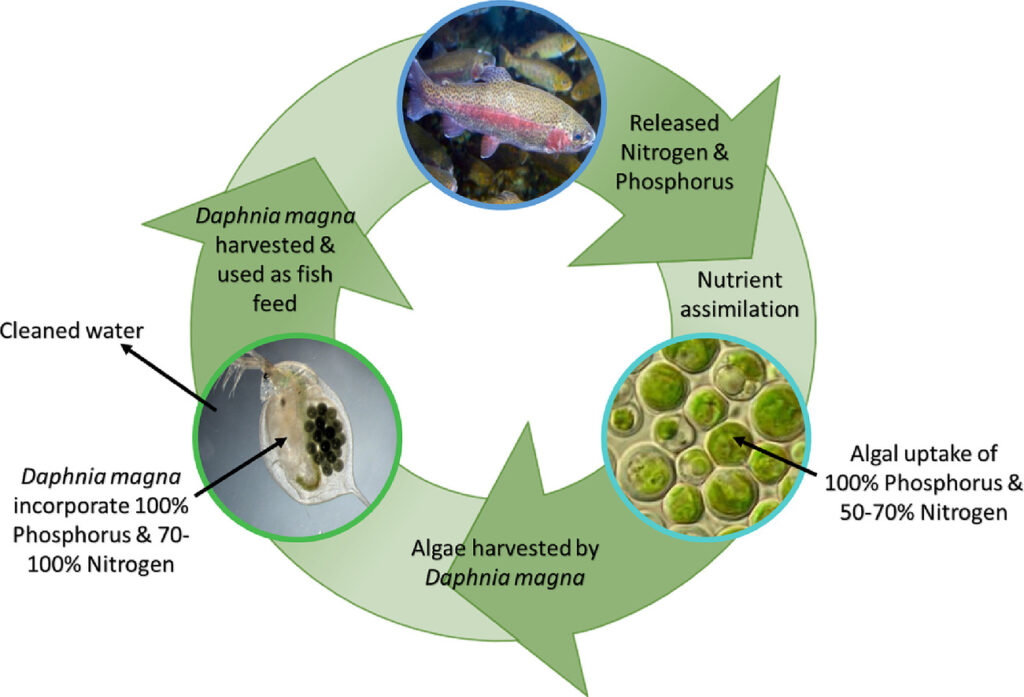
Project Summary
Recirculated aquaculture systems (RAS) are often seen as the future of aquaculture because of well-documented issues surrounding wild capture or open-net farming. One engineering problem for RAS are nutrient discharges, which cause water eutrophication (water body senescence or aging and death). Microalgae are one of the causes of eutrophication, however, microalgae directly incorporate nutrients such as nitrogen and phosphorus as well as carbon dioxide directly into their biomass. Removing microalgae from water is extremely resource intensive but Daphnia magna eat (harvest) microalgae and are a high value fish feed. These D. magna can then be fed to shrimp or fish larvae presenting a nice bio-circular economic production system. This was essentially a lab scale proof of concept for this system. The scientific details are published in the Science of The Total Environment. In future posts, I plan on going into detail some of the motivations behind this project such as eutrophication and the circular economy as well as on the ramifications of this work.
Gratitude

I owe many thanks to several people and organizations for this to include Borja Valverde Pérez who has long worked with microalgae for resource recovery from wastewater and served as the principle advisor; Xinyu Zhu who showed me many lab techniques; Marja Koski who allowed me to work on a related project and helped me tremendously with Daphnia magna and aquaculture; Irini Angelidaki who was extraordinarily generous with her resources; as well as Arnaud Dechesne, Anna Łukaszewicz, Karl Gorzelnik, Keya Mukherjee, Caitlin Nyhus, and the good people of Pease New Hampshire.
Musholm A/S was extremely generous in providing the wastewater used in this study.
The research was supported through the InWAP project grant by the Danish Innovation Foundation, Denmark and Department of Biotechnology, Government of India (Grant no. BT/IN/Denmark/61/KM/2018-19).
Disclaimer

The information and views here are my own and I do not speak on behalf of the EPA in any way shape or form. None of the information provided is intended to offer engineering, legal, financial, business, information technology, or any other possible professional advice and the information provided may contain errors or omissions. I will not accept any responsibility or liability for how you use this information. Use it at your own risk and take all steps necessary to ascertain that this information is correct.